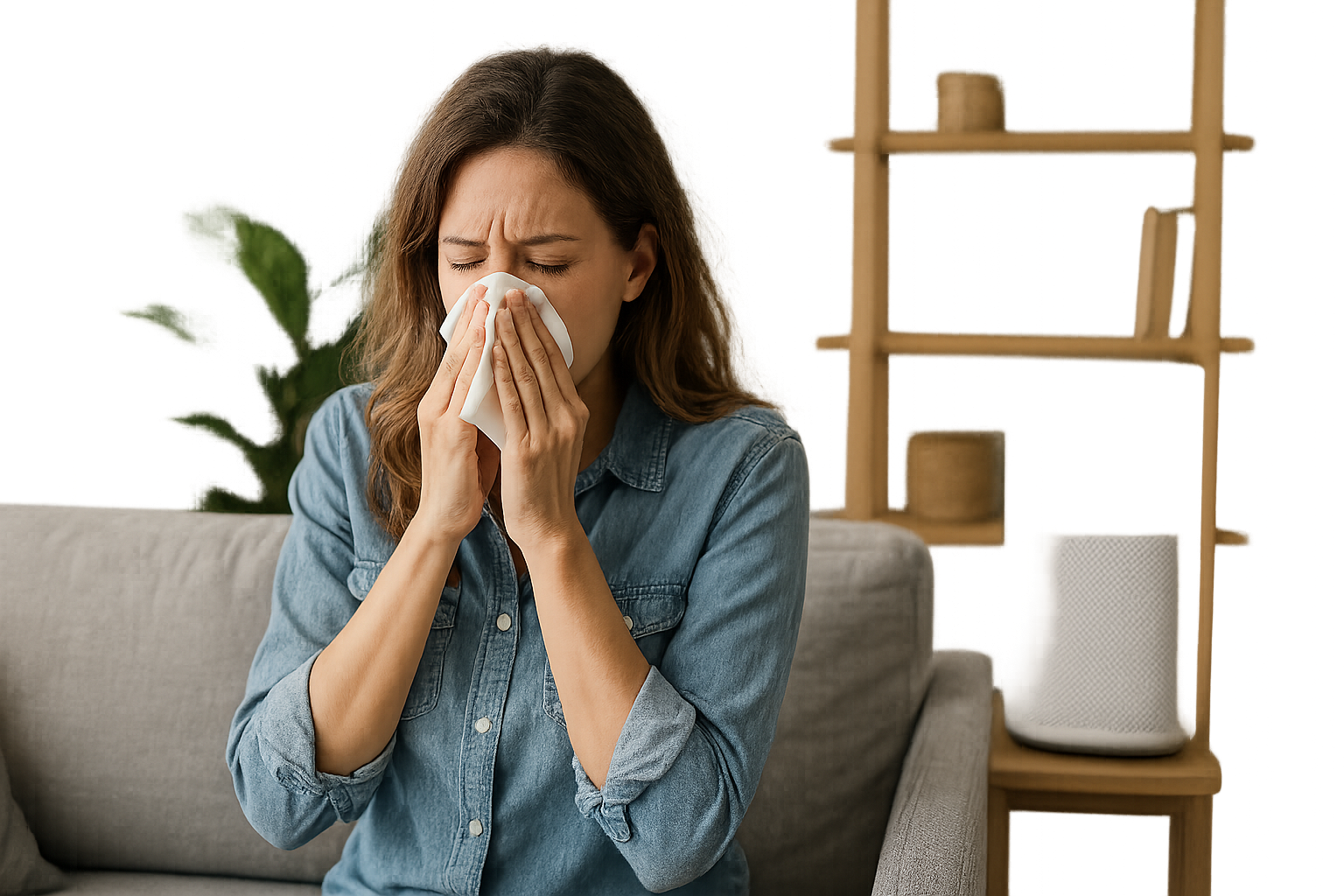Respiratory wellness is essential for everyone, especially those coping with allergies or asthma. Simple changes at home can dramatically improve your indoor air quality, helping you manage symptoms and enjoy better health.
In this blog, we’ll cover expert tips and resources to boost your respiratory wellness, including the latest guidance on air purifiers and humidifiers.
Did you know indoor air can be up to five times more polluted than the air outside? Small rooms, in particular, can harbor dust, pollen, pet dander, and other microscopic allergens that trigger allergy and asthma symptoms. If you’re experiencing symptoms like sneezing, itching, or congestion at home, it’s time to evaluate your indoor environment and consider air purification solutions.
Top Tips for Reducing Allergens Indoors
- Invest in a quality air purifier:
Devices equipped with HEPA filters capture 99.97% of airborne allergens, like pollen, pet dander, and dust mites. For small rooms, models such as the LEVOIT, BLUEAIR, or Honeywell purifiers combine strong filtration with quiet operation, making them ideal for bedrooms or offices.
- Regular cleaning:
Dust and vacuum often, especially in areas where allergens tend to accumulate, such as carpets, curtains, and upholstery. Consider making bedrooms pet-free zones.
- Filter changes matter:
Replace air purifier filters as recommended to ensure optimal performance. Many modern devices have filter replacement indicators, making this task hassle-free.
- Control humidity:
Too much humidity encourages dust mites and mold, while air that’s too dry can irritate airways. Maintaining a balanced indoor humidity level helps minimize allergen proliferation.
Pet Allergies: Managing Furry Friend Triggers
Pet dander is a top cause of allergy flare-ups, as these allergens stay airborne and settle on surfaces. Here’s how you can minimize pet-related irritation.
- Use air purifiers with HEPA and activated carbon filters:
These devices can dramatically lower concentrations of pet allergens and remove odors from your home. The right purifier also neutralizes pet smells and other volatile organic compounds (VOCs).
- Frequent pet baths and grooming:
Regularly washing and brushing your pets reduces the amount of dander in your home.
- Create pet-free zones:
Keep bedrooms or specific areas in your home off-limits to pets for better control over allergen hotspots.
Read more about how air purifiers work for pet allergies here: findmyairpurifier.com/do-air-purifiers-work-for-pet-allergies/.
Asthma & Air Quality: Breathing Easier at Home
People with asthma are especially sensitive to airborne pollutants and allergens. Clean indoor air directly impacts symptom control and quality of life.
- HEPA filter air purifiers are a must:
These devices remove triggers that can exacerbate asthma, such as fine dust, smoke, mold spores, and dander.
- Watch for smoke and VOCs:
Use air purifiers that can handle both particles and gaseous pollutants.
- Maintain optimal humidity:
Extremely dry or humid air can provoke asthma—use a humidifier or dehumidifier as needed, but always maintain proper cleaning to prevent mold.
Is a humidifier or air purifier better for allergies and asthma? Compare expert advice at findmyairpurifier.com/what-is-better-for-allergies-humidifier-or-air-purifier/.
Bonus
Learn about the best models, comprehensive allergy strategies, and product comparisons:
The Best Air Purifiers for Allergies in Small Rooms
Humidifier vs Air Purifier: What’s Better for Allergies?
Empower yourself with these respiratory wellness tips and enjoy a fresher, healthier home environment every day.

